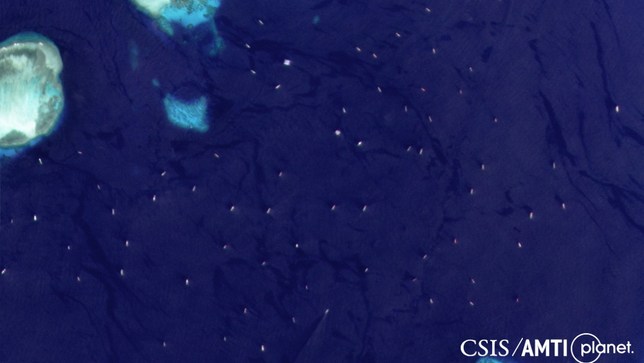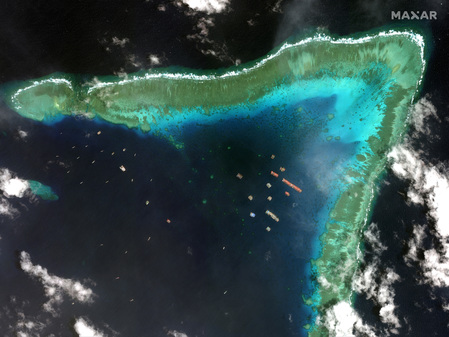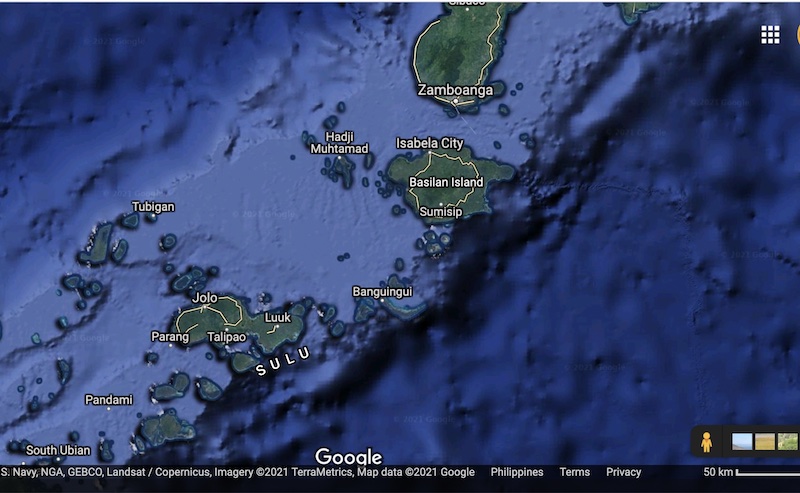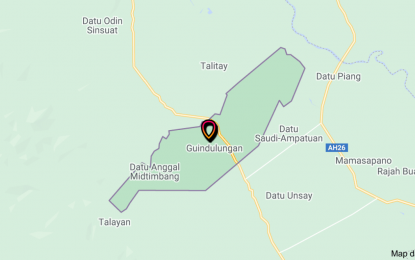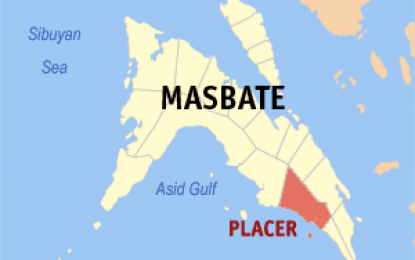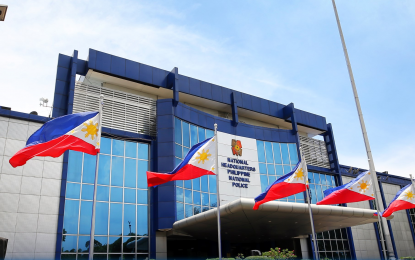From the Asia Maritime Transparency Initiative (Oct 22, 2021): There and Back Again: Chinese Militia at Iroquois Reef and Union Banks
On September 30, Foreign Affairs Secretary Teodoro Locsin Jr. instructed the Philippine Department of Foreign Affairs to file three new protests with China over recent actions in the South China Sea, including the “continued presence of Chinese fishing vessels in [the] vicinity of Iroquois Reef.”An examination of satellite imagery reveals that Chinese militia vessels began gathering at Iroquois in April, just after the dispersal of the nearly 200 vessels that had been gathered at Whitsun Reef within the Union Banks earlier in 2021. Recent imagery shows that the number of ships at Iroquois has fallen since the Philippine protest, but it also suggests that many of those vessels likely headed back to Union Banks, where numbers are now reaching the levels seen in March. This is evidence of the Chinese militia’s shell game in the Spratly Islands. When international outcry or patrols by other claimants convince them to leave a disputed feature, they disperse to nearby reefs for a time. But their overall numbers in the Spratlys remain consistent.

Iroquois Reef is located at the southern end of Reed Bank, an area northeast of the Spratly Islands thought to be rich in oil and gas. Philippine hydrocarbon exploration in the area was postponed in 2011 after Chinese harassment of a Philippine vessel surveying the area. Manila froze exploration again in 2014 pending the results of its arbitration case against Beijing. The freeze was lifted in 2020 but concrete plans to resume exploration have yet to materialize. Reed Bank was also the site where a likely Chinese militia vessel, the Yue Maobin Yu 42212, rammed and sank a Filipino fishing boat, F/B Gem-Ver, in 2019.
Satellite imagery from Planet Labs show Chinese boats first arriving at Iroquois Reef in mid-April, just after the 200 massed at Whitsun Reef dispersed.
Clockwise from left: Vessels at Iroquois Reef on October 2; on July 21; on April 14
Ranging in size from 40-50 meters, the first ships are visible in imagery as early as April 9. The total number of ships at Iroquois seems to have remained low through early June, with no more than 5 ships visible on any date. But by June 15, the number had grown to 15, and would double to an average of 30 boats in late July. The average number of vessels fell back to 15 in August before rising again to 30 in late September.
AMTI found no AIS signals from Iroquois Reef visible on commercial platform Marine Traffic during this period. This is unsurprising—the mass deployment at Whitsun Reef showed that most Chinese militia vessels are equipped with weak, Class-B AIS transceivers that are rarely detected by satellite.
But one operator likely did detect AIS signals at Iroquois: the Philippine Bureau of Fisheries and Aquatic Resources (BFAR). Two BFAR vessels conducted a patrol through the area on September 29 and would have detected most if not all of the Chinese vessels via ship-to-ship AIS transmissions.
The MCS 3001 and 3004 left Palawan on the morning of September 28, wrapping around the northern end of Reed Bank before arriving at Iroquois Reef the following morning. They stopped and stayed at Iroquois for two hours before returning to port. Secretary of Foreign Affairs Teodoro Locsin Jr. ordered the protest filed with China the next day. This may have had an impact as the number of ships at Iroquois has dropped significantly since: 35 vessels were visible in satellite imagery from October 2 but only 5 were present by October 17.
Back to Union Banks
But as was apparent in the aftermath of the mass deployment at Whitsun Reef, Chinese vessels leaving one contested area most often end up at another. In this case, many of them may have gone back to Union Banks, where the number of vessels visible in satellite imagery has been rising over the past three months. In early August, imagery showed only an average of 40 vessels visible in the northern half of Union Banks, which includes Whitsun Reef. By September, over 100 boats were visible. And in an image from October 17, well over 150 ships can be seen.

Now and then: over 150 vessels were visible at Union Banks on October 17, while only a handful were present on August 8
These numbers include some Vietnamese coastguard and fishing boats, but the vast majority are Chinese fishing vessels 50 meters or more in length. This easily distinguishes them from their smaller Vietnamese counterparts. In comparison to the massing at Whitsun Reef in March, these vessels are spread more evenly throughout the northern half of Union Banks, with relatively few at Whitsun itself. Some ships, including five of the Yue Tai Yu vessels owned by Taishan Fancheng Fisheries Development as well as the Zhu Xiang 1163 and the Qiong Sanya Yu 72186, were visible broadcasting AIS on commercial platform Marine Traffic.

Vessels at Union Banks, October 17, 2021
The Philippines filed another protest on October 20, this time about Chinese vessels challenging its patrol ships in the Spratlys with horns, sirens, and radio communications. If this massing of militia vessels at Union Banks continues, more diplomatic protests are likely to follow.
https://amti.csis.org/there-and-back-again-chinese-militia-at-iroquois-reef-and-union-banks/#jp-carousel-29602






